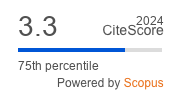Article | Open Access
Split Households, Family Migration and Urban Settlement: Findings from China’s 2015 National Floating Population Survey
| Views: | 5900 | | | Downloads: | 2939 |
Abstract: For decades, China’s rural migrants have split their households between their rural origins and urban work locations. While the hukou system continues to be a barrier to urban settlement, research has also underscored split households as a migrant strategy that spans the rural and urban boundary, questioning if sustained migration will eventually result in permanent urban settlement. Common split-household arrangements include sole migration, where the spouse and children are left behind, and couple migration, where both spouses are migrants, leaving behind their children. More recently, nuclear family migration involving both the spouse and children has been on the rise. Based on a 2015 nationally representative “floating population” survey, this article compares sole migrants, couple migrants, and family migrants in order to examine which migrants choose which household arrangements, including whether specific household arrangements are more associated with settlement intention than others. Our analysis also reveals differences between work-related migrants and family-related migrants. The findings highlight demographic, gender, economic, employment, and destination differences among the different types of migrant household arrangements, pointing to family migration as a likely indicator of permanent settlement. The increase of family migration over time signals to urban governments an increased urgency to address their needs as not only temporary dwellers but more permanent residents.
Keywords: China; family migration; rural–urban migration; settlement; split households
Published:
© C. Cindy Fan, Tianjiao Li. This is an open access article distributed under the terms of the Creative Commons Attribution 4.0 license (http://creativecommons.org/licenses/by/4.0), which permits any use, distribution, and reproduction of the work without further permission provided the original author(s) and source are credited.


